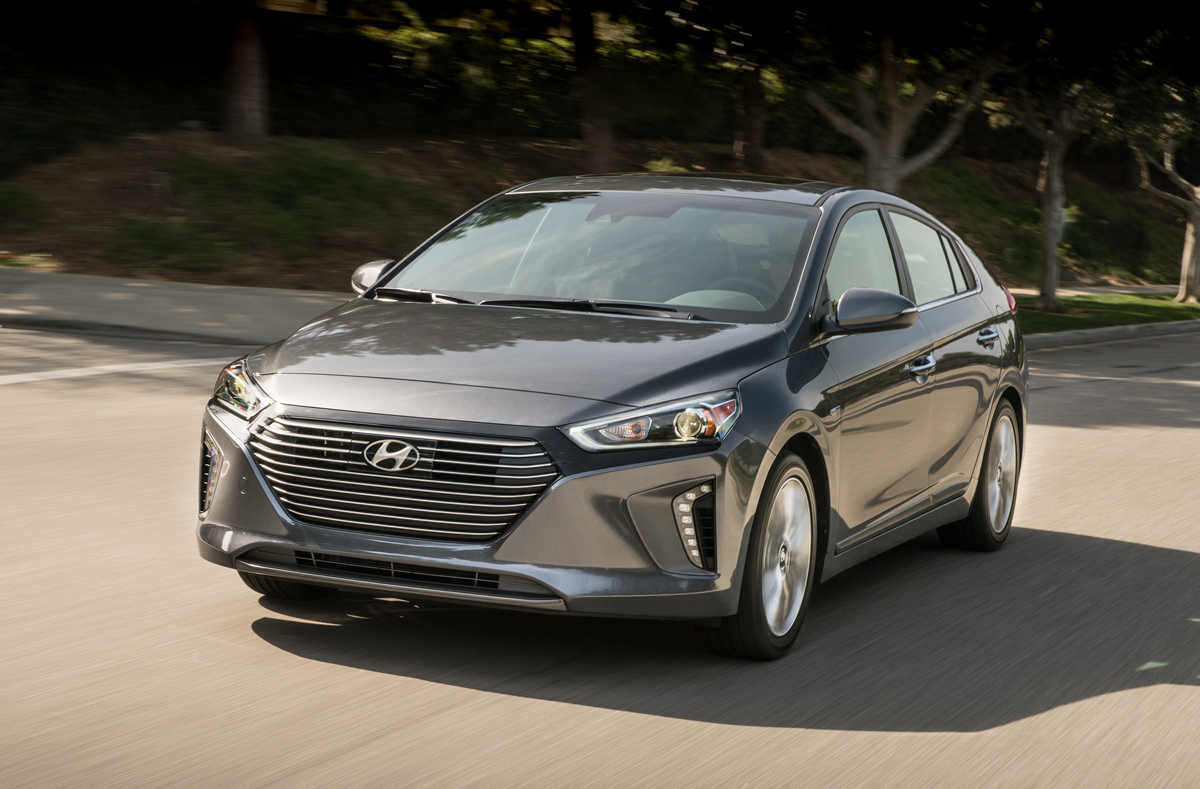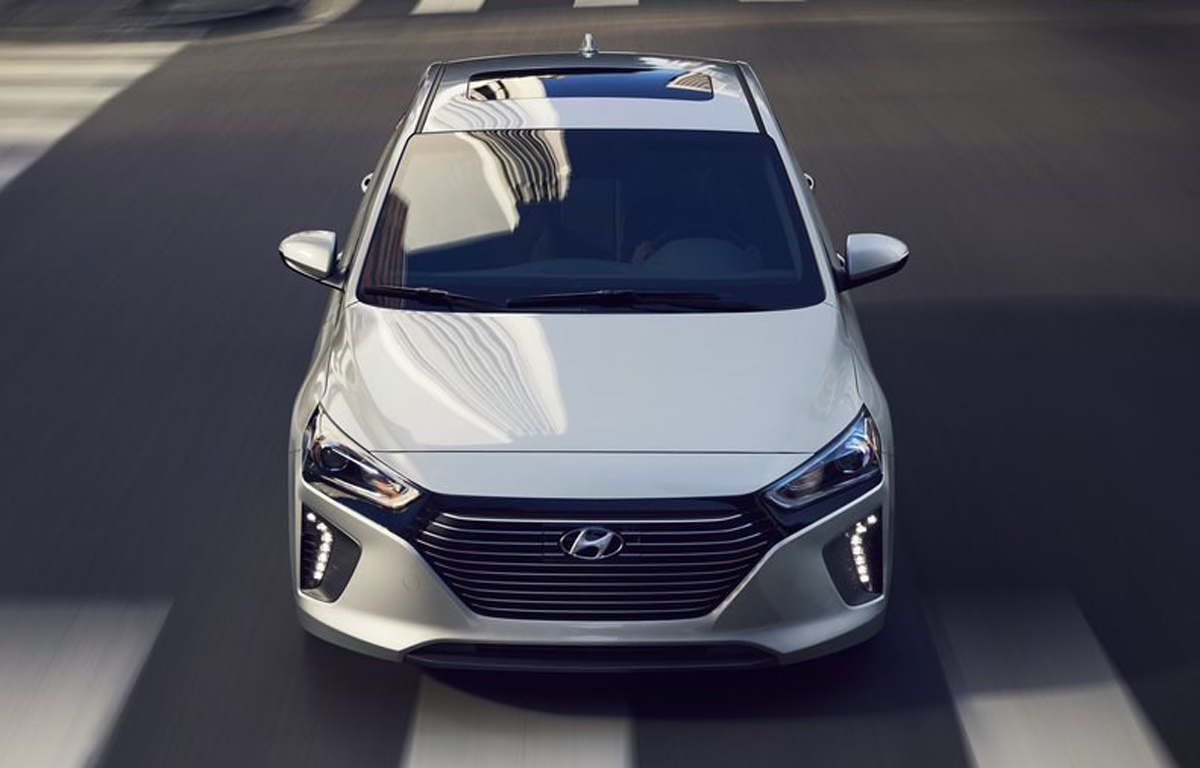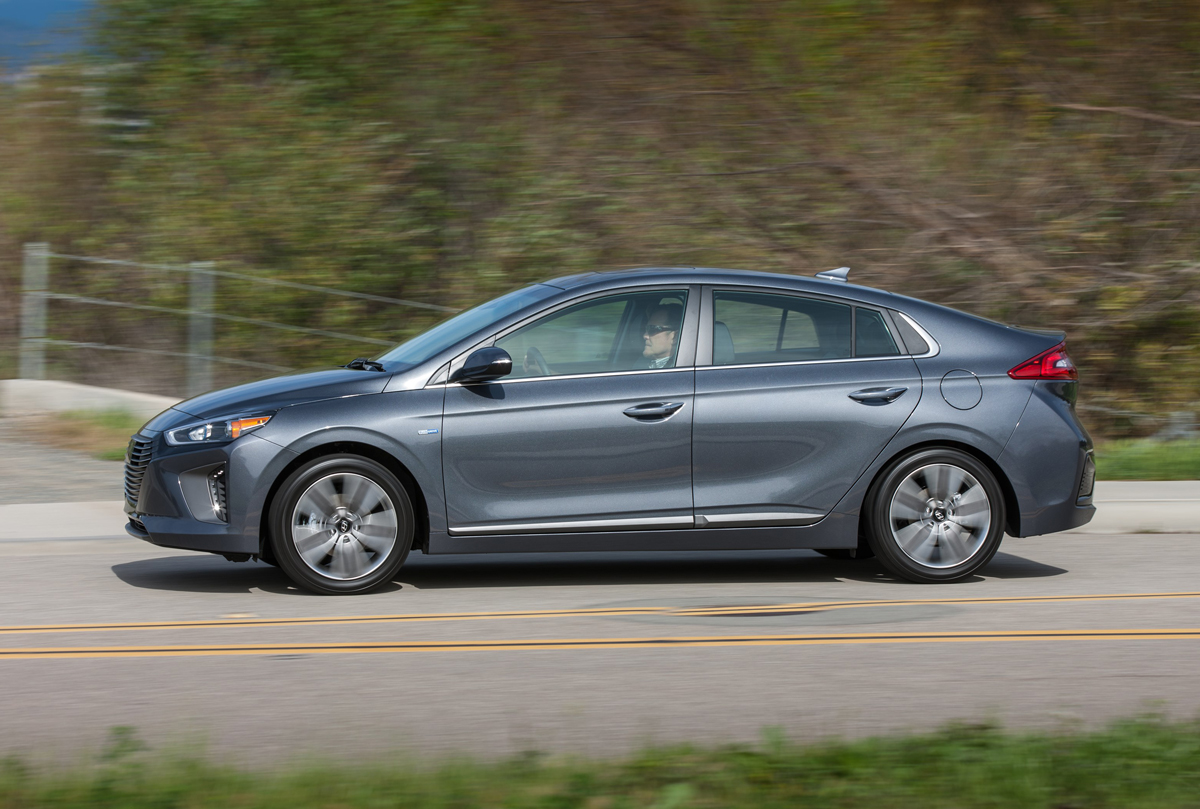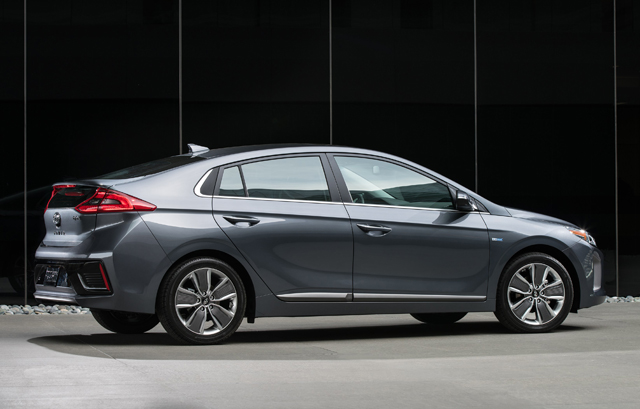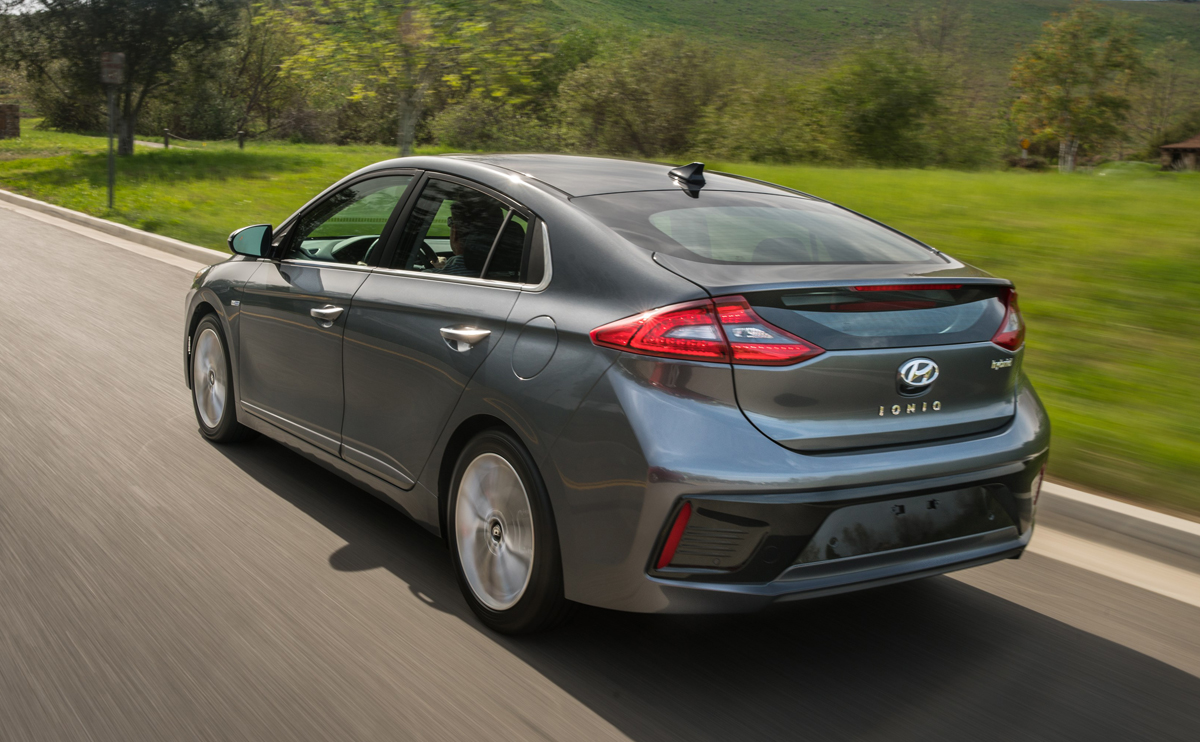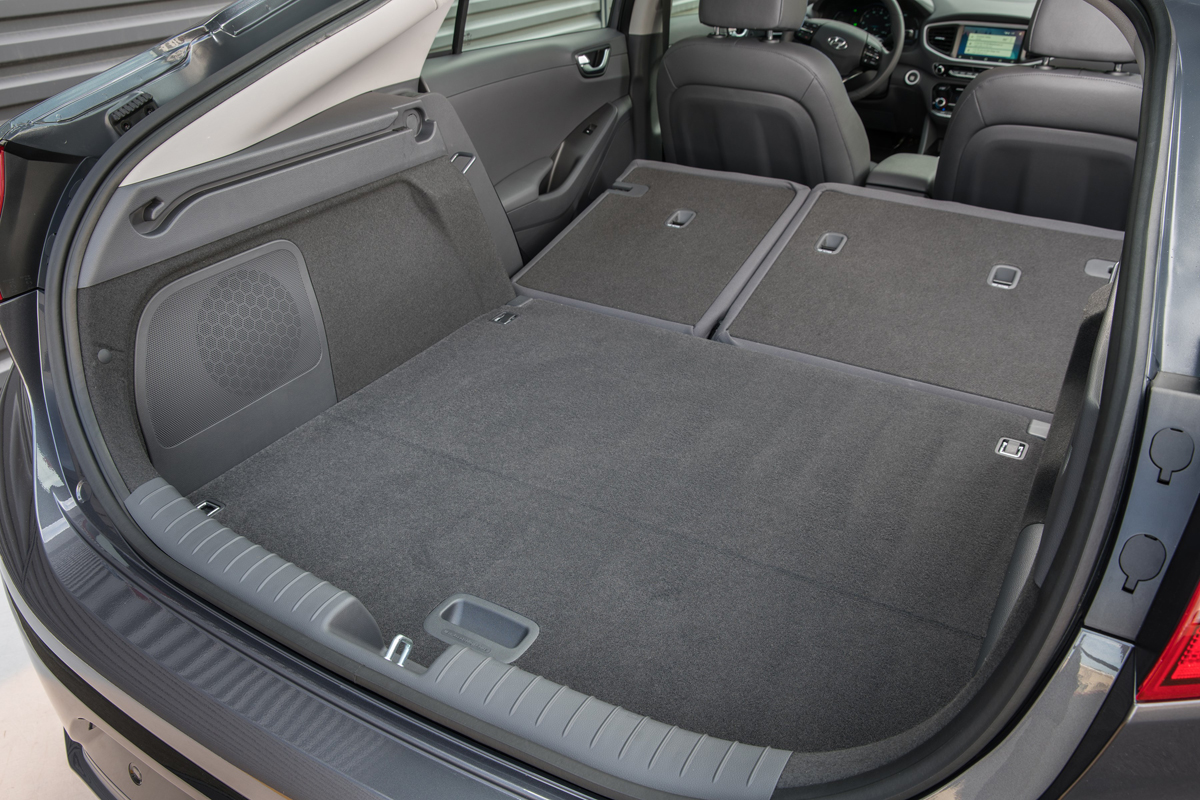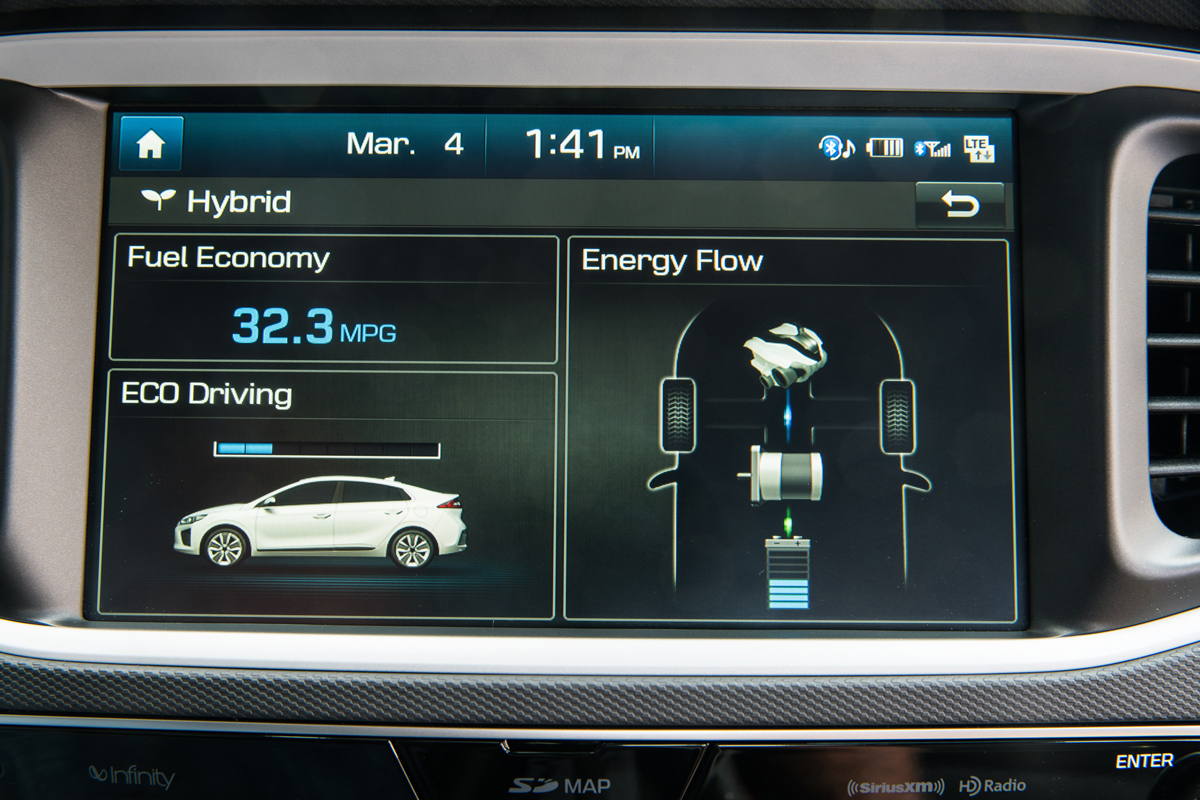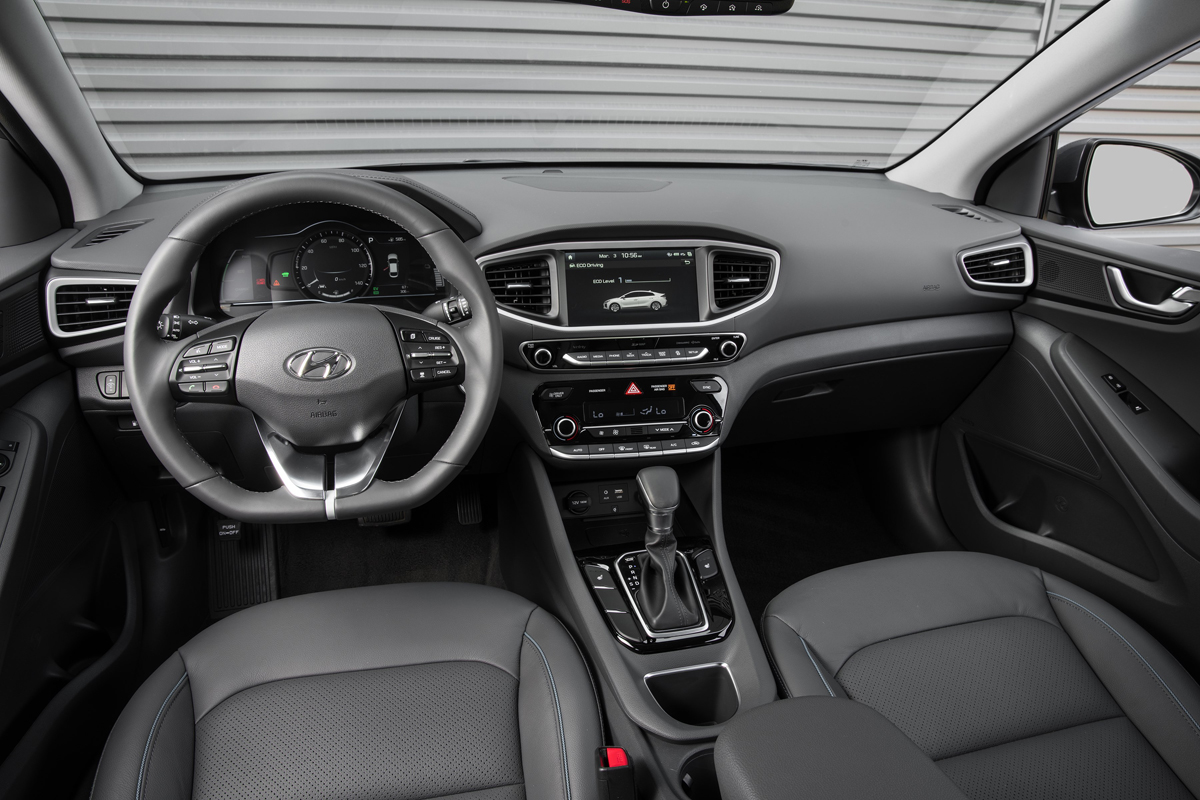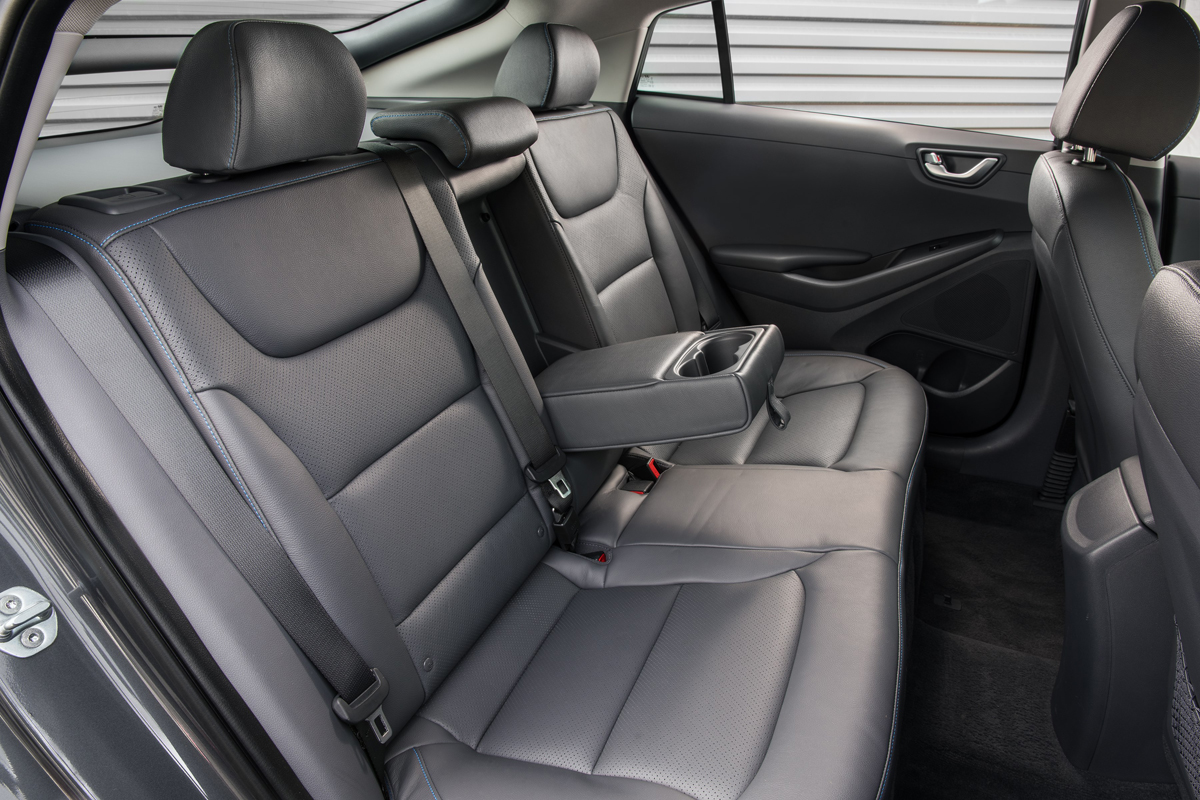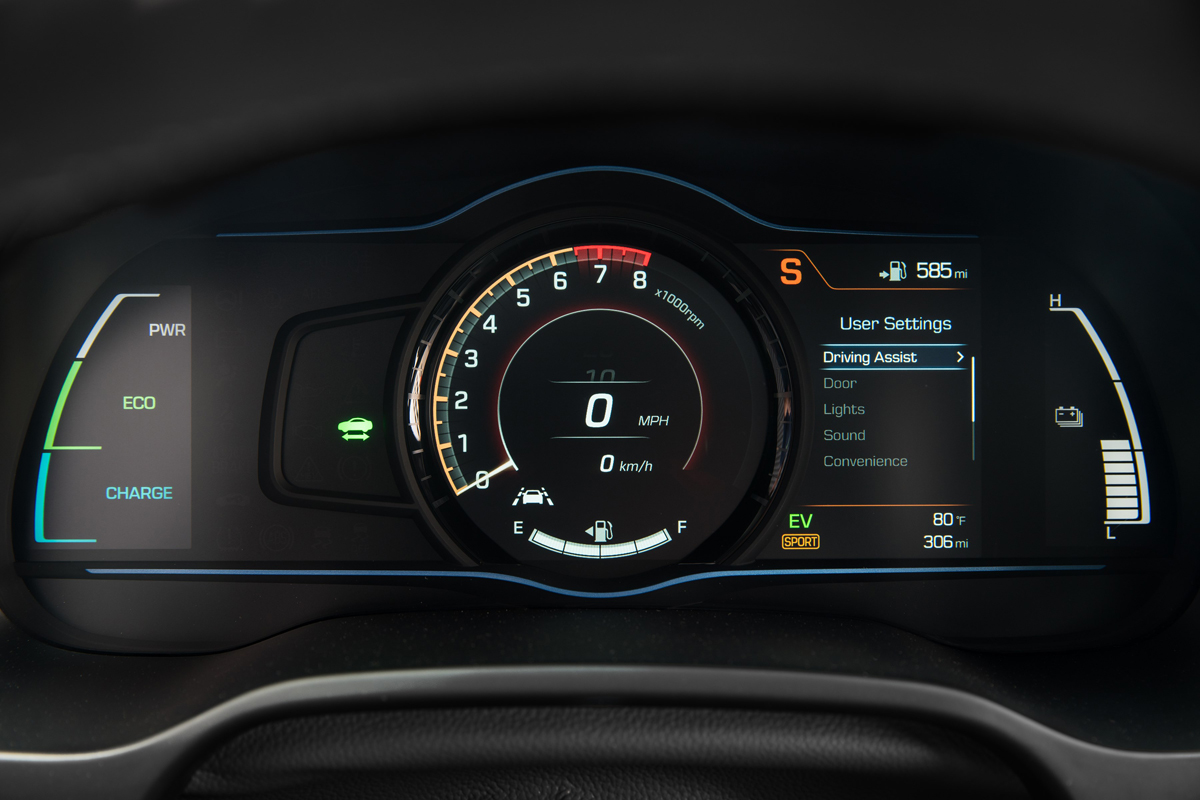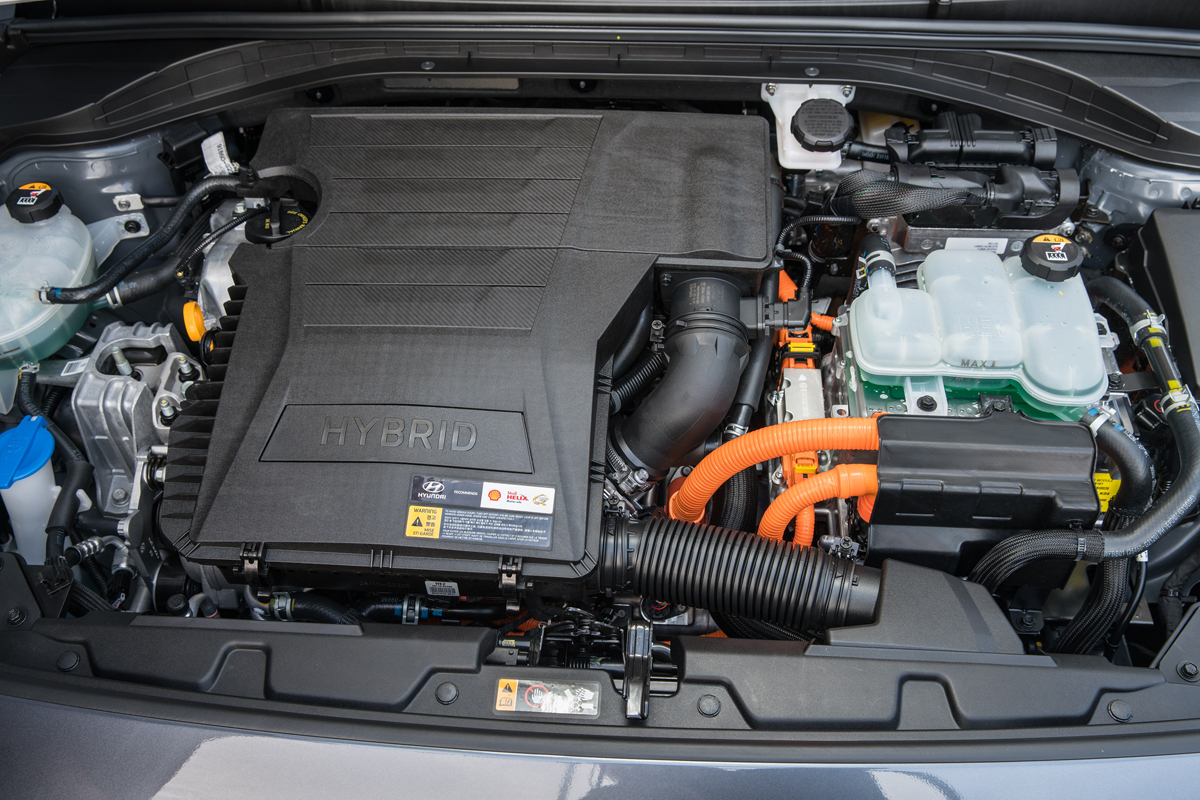One of the reveals at the New York Auto Show is the long awaited Toyota Prius competitor from Hyundai. And unveiling their first dedicated Hybrid model, the new 2017 Hyundai Ioniq, is actually three.
Entering the world of a dedicated vehicle line to compete with Toyota’s iconic Prius, is the all-new Hyundai Ioniq five door hatch. It’s armed with the styling to make its eco-car point just like the Prius, but Hyundai has gone a couple steps further.
The new Ioniq will be available in not only a traditional gasoline-electric hybrid at launch, but will also offer a plug-in hybrid as well as a dedicated electric only model. It will be the first car of its kind to offer all-three variations of currently available electrified powertrain options.
Making this all possible is a unique chassis platform that allows for a variety of batteries from the smallest found in the hybrid to the largest found in the all-electric model. In all, the batteries fit under the rear seat, allowing for un-compromised interior space.
But before we get to its interior, styling as you can see is a blend of Hyundai’s increasingly familiar collection of sleek angles and appealing lines combined with the shape and silhouette we have come to know for compact hybrid cars.
While some like the outspoken style of the Toyota Prius, I think most would agree the Ioniq carries out the theme in a more subdued if not upscale look and feel. And it is very much in keeping with other models they offer in its design language.
Depending on the model, each has slight variations in trims, exterior features and wheel designs to set them apart. Headlights for instance on the hybrid are Xenon which is a nice starting point, but upgrade to LED with the plug-in hybrid and electric models.
The three powertrain choices are wide and varied, starting with the hybrid. Using a 1.6 liter direct-injected Atkinson-cycle four-cylinder with 104 horsepower and a 43 horsepower electric motor, it has a total system power of 139.
Unlike the Prius, the Ioniq has a six-speed dual-clutch automatic transmission, the electric motor in-between it and the gasoline engine. This more traditional approach offers a more normal if not exhilarating driving experience than the continuously variable transmission or CVT.
The difference between the hybrid and plug-in hybrid lies in their lithium-ion polymer batteries and electric power. The Hybrid comes with a 1.56 kWh battery that allows for traditional hybrid operation with occasional electric only operation when it has the charge.
Ioniq Plug-in Hybrid has a larger 8.9 kWh battery that when charged by plugging in, offers an all-electric range of more than 25 miles. Additionally it has a more powerful 60 horsepower electric motor to go with the gasoline engine, allowing for increased electric-only drivability.
For the true zero-emission drive, there is the Ioniq Electric which offers up to 110 miles of range from its 28 kWh lithium-ion polymer battery. With 120 horsepower and 215 lb.-ft. of torque delivered through a one-speed transmission, it promises similar performance to a Kia Soul EV, which has proven plenty fun to drive.
And to the interior, the design Hyundai stayed on the more traditional theme, eschewing the futuristic robot feel some dedicated Eco Cars have. There are some variations between the three models, but all three offer plenty of space and comfort for five passengers.
Extensive use of recycled and ecologically-sensitive materials in the trims and seating will appeal to some customers, while the inclusion of high tech goodies will to others. A standard touch-screen infotainment system will feature most expected functionality including Apple CarPlay and Android Auto connectivity among other things.
In our short presentation here the most important takeaway is that because of its battery packaging on all three models, they offer excellent cargo space and versatility. Ioniq Hybrid rear seats can fold down, providing an estimated 26.5 cubic feet of cargo area. The space is slightly less on others as their batteries take up additional space.
The new 2017 Hyundai Ioniq models are expected to begin rolling out by year’s end with important information like mpg and mpge ratings to come closer to that time along with pricing information. We’ll have a far more detailed review as soon as we get behind the wheel.

